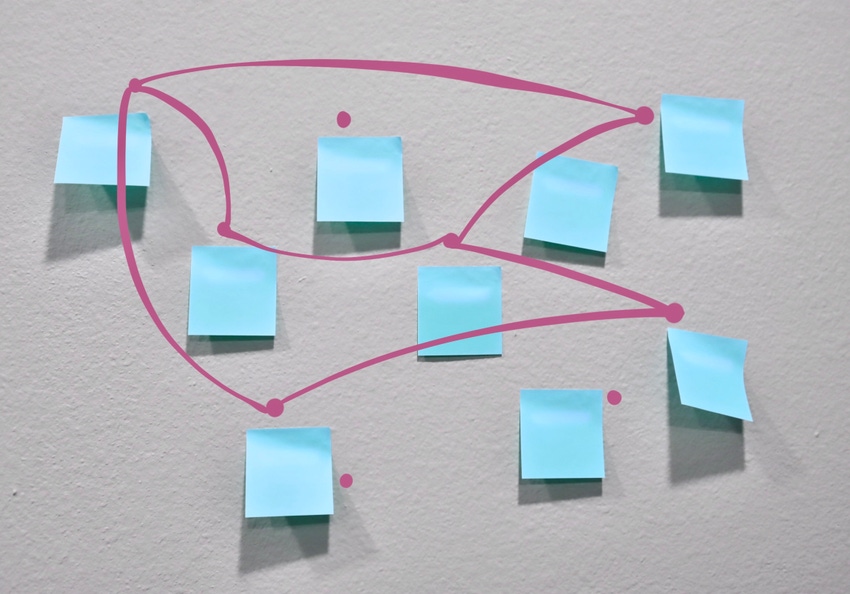Pre-Production and Brainstorming Optimization
Here are your big fives on getting over the hurdle of an AI generated Google feed that’s static upon first glance.
April 12, 2024

Say you have an idea for an indie or AAA game. You’ve made a few technically focused games and are looking to incorporate a narrative and more of a story structure to your new adaptation. You’re open to producing it by yourself or bringing a few more people on board to make the production time efficient.
Let’s assume you have crazy visuals in your head, but the game idea needs to be fleshed out before you can bring others on board and introduce them to the game plan.
Wanting to keep the pre-production as clean as possible, you set out on a solo journey to jot down your ambitious goals only to be met with limited reference resources online that date back no more than five to seven years.
The gaming industry, having popped off in the past few years has had a very niche online community with most of the action happening inside studios and patreon channels, leaving Youtube tutorials as the most generic source of input. With the same general tips on the how-tos and what not-tos, your enthusiasm decreases with every 15 minutes of scrolling. A page worthy of technical opinions, you’re now looking at the blank white screen of Google Home.
Let’s also assume you have certain skills but don’t have them all. You have 2 weeks to break it all down, with no time to sit in online classes to learn a month of content that they promise will set you up for life. Here, I’m assuming you’re not a newbie to game engines and have some concept of all the different elements that go into sculpting something nice.
Great, here are your big fives on getting over the hurdle of an AI generated Google feed that’s static upon first glance.
The first brick to break down is the cinematic/animatic reel. Watch cinema, watch shorts, watch them back to back, then download them. With the rough idea you started with in your mind’s eye, open up Da Vinci and get cracking on saving the shots that matter to you, in no particular order at first. Get them all in.
Once you have some clips to look at for certain moments that ring a bell for you, you’re already at a great point and have skipped the need to draw in perspective and all that jazz that would ideally take you a few weeks to master. Filmmaking can be studied, but it can also be felt. So the shortcut here is to feel your way through the storyline, what comes when, how, where, keep editing, keep going. Making notes and comments on characters that should be in sync with each other as faces change throughout your reel. When you have your 2 - 3 minutes of content, it’s time to jump into your google drive.
Open a google document, she’ll be your bestie through it all. Give it headings, subheadings, organise, it takes 3 seconds. You’ll need a beat sheet (google excel sheet) to go with the cinematic/animatic reel.
Honestly what is a beat sheet? Even people in the field sit with it for a minute to get into it. When done solo, it’s the most beautiful piece of digital paper in our opinion.
Anywho, back to the basics. Write down your shots in order. Any notes you took in another column. Every time the camera changes, make a note of the characters in the scene, make a note of the location they’re at. What actions they partake in. With these pointers covered, you’re now in good shape to give meaning to your storyline. Fill in the gaps. The breaks you couldn’t fill in with your reference collections, make extra rows and fill those in. What happens after Suzy jumps off the cliff? What object does Mike fight with? Get into the specifics in your beat sheet. Beat your sheet up.
With your details all ready, now hop back into google docs, make subheadings for your assets, sets, props, characters, look and feel for those sets. This part is a treat for your eyes as you see it all come together. This google document is your Bible. It’s what will get you through this mega project that’s been stuck in your head for the past god knows how long.
Good job already!
Now, finally, go meditate. Or call up a work friend. It’s time to get some fresh eyes on the places you feel stuck at, or need feedback on. Talk to others about your vision. Now you have a reel and some look and feel screenshots to show them. Hopefully some characters and their personalities too. Ask them where they got stuck trying to understand where you’re taking them.
Do this several times as you see fit. Identify the loop holes and fill those in.
And finally you start with your production. Starting with your sets and characters. But while you do get started on those, be mindful of the story being locked in with no new assets or set changes to be made. Do post-it notes if needed, do visual charts and calendars if segregating time gets more efficient for you, but whatever you do, stick with it and do it well. Your two weeks might include, no they probably will include, weekends as well, but you’ll be a happy human with a colorful folder and a production mission by the end of it.
Good good luck on your pre-production journeys folks!
Read more blogs from Alterconnect on our website: https://www.alterconnect.art/articles-blogs
Read more about:
BlogsAbout the Author(s)
You May Also Like









